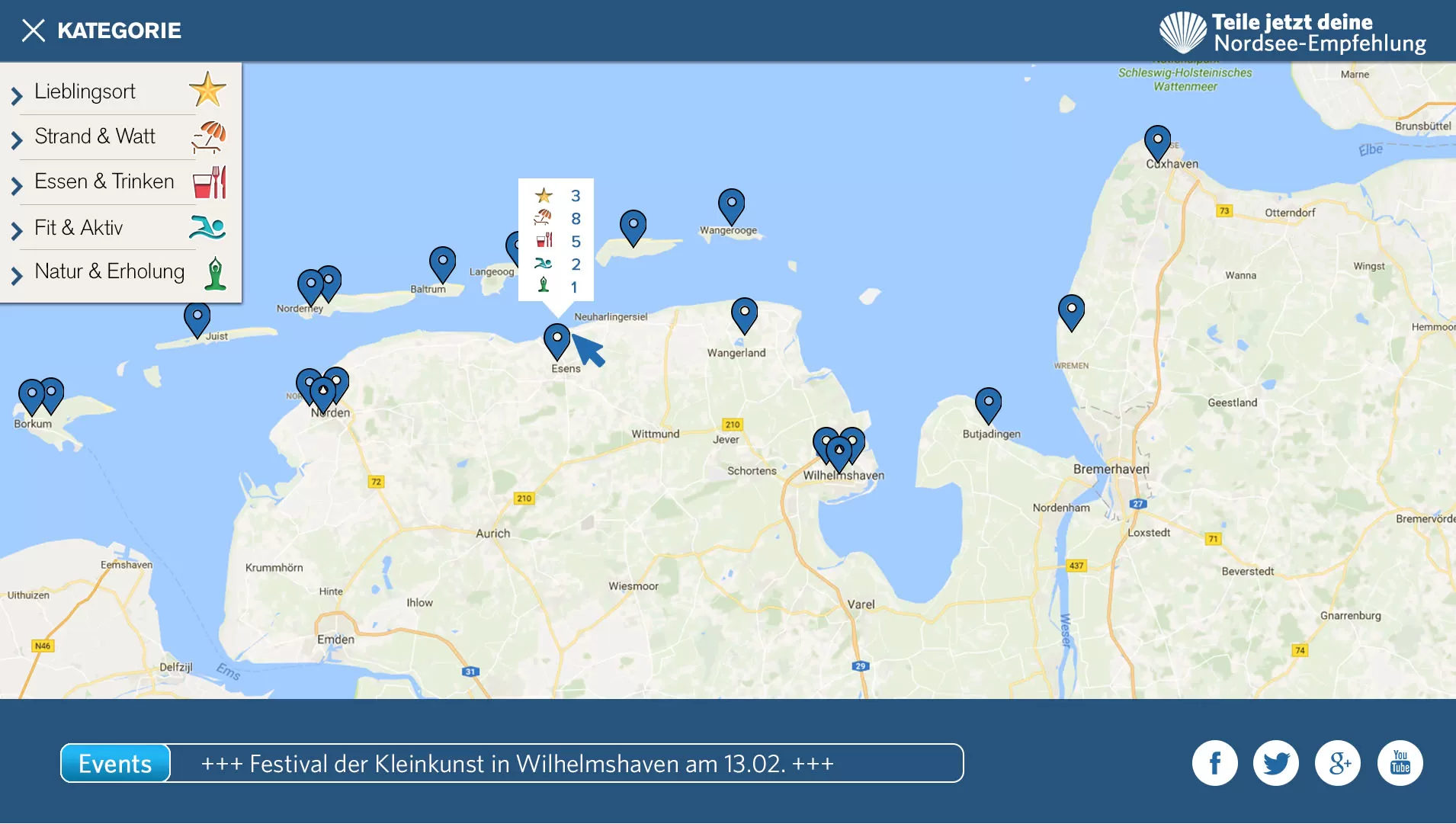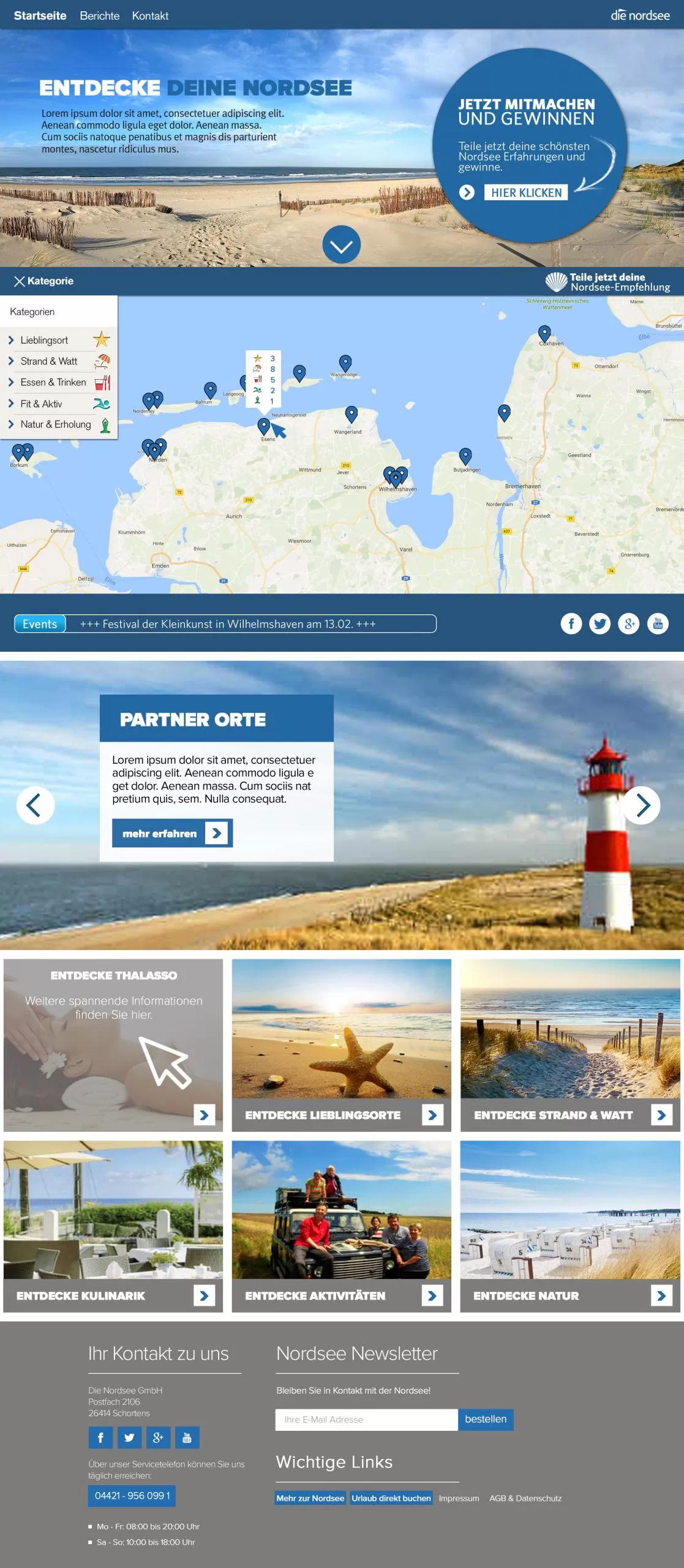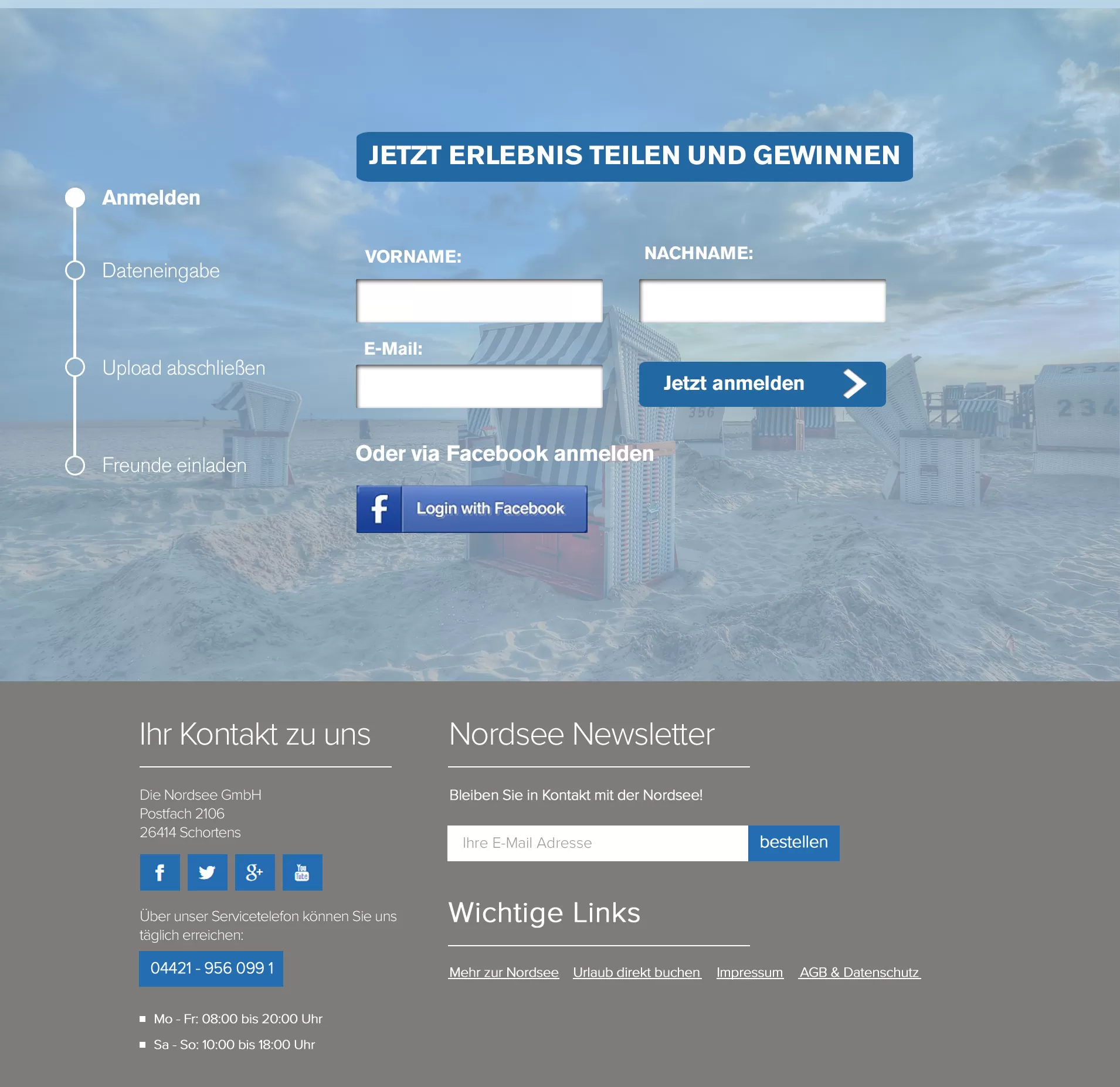A major German advertising company wanted to create a website for travelers to attract them to the North Sea Area. To meet this challenge and build loyalty to this region, the customer decided to create a visual map with photos showing real travelers’ emotions followed by text feedbacks.
Challenges
Elinext was challenged to make a high-load platform and allow users to upload photos, write text and share each post via social media. The main goal was to store long-term data, organize good performance for map area, and not to lose this data.
The main features of the website included:
- Google Map supporting loads of data;
- Photo uploading engine;
- Social sharing integration (Facebook, Twitter);
- Data export engine (CSV format);
- Mobile-friendly user interface;
- High-load performance support.
Results
Elinext created a responsive website for travel recommendations based on WordPress CMS. During the development process, the team implemented the custom solution and self-integrated plugins.
When the users visit the website, they complete the simple registration process, after which they can share pictures of places they have visited in the North Sea area, leave feedbacks and pin all of these to the relevant place on the map.
Before a photo appears on the main map, it is sent to the backend office where the administrator validates it. The development team created the functionality to store large amounts of data and provide easy access to each registered user data (login, email, Facebook link). With this information, the administrator can easily contact users for solving issues or gathering feedback.
By the end of each month, the administrator holds a competition between the users with the prizes: free travels, partner’s discounts, and more.
Delivery period
Elinext provided full support after launch and on the production stage. The development team followed different metrics to reduce performance issues and help in the emergency during the advertising campaign.
Methodology
Elinext kicked off under the Waterfall methodology and proceeded with the specific change requests in the after-launch period.





















